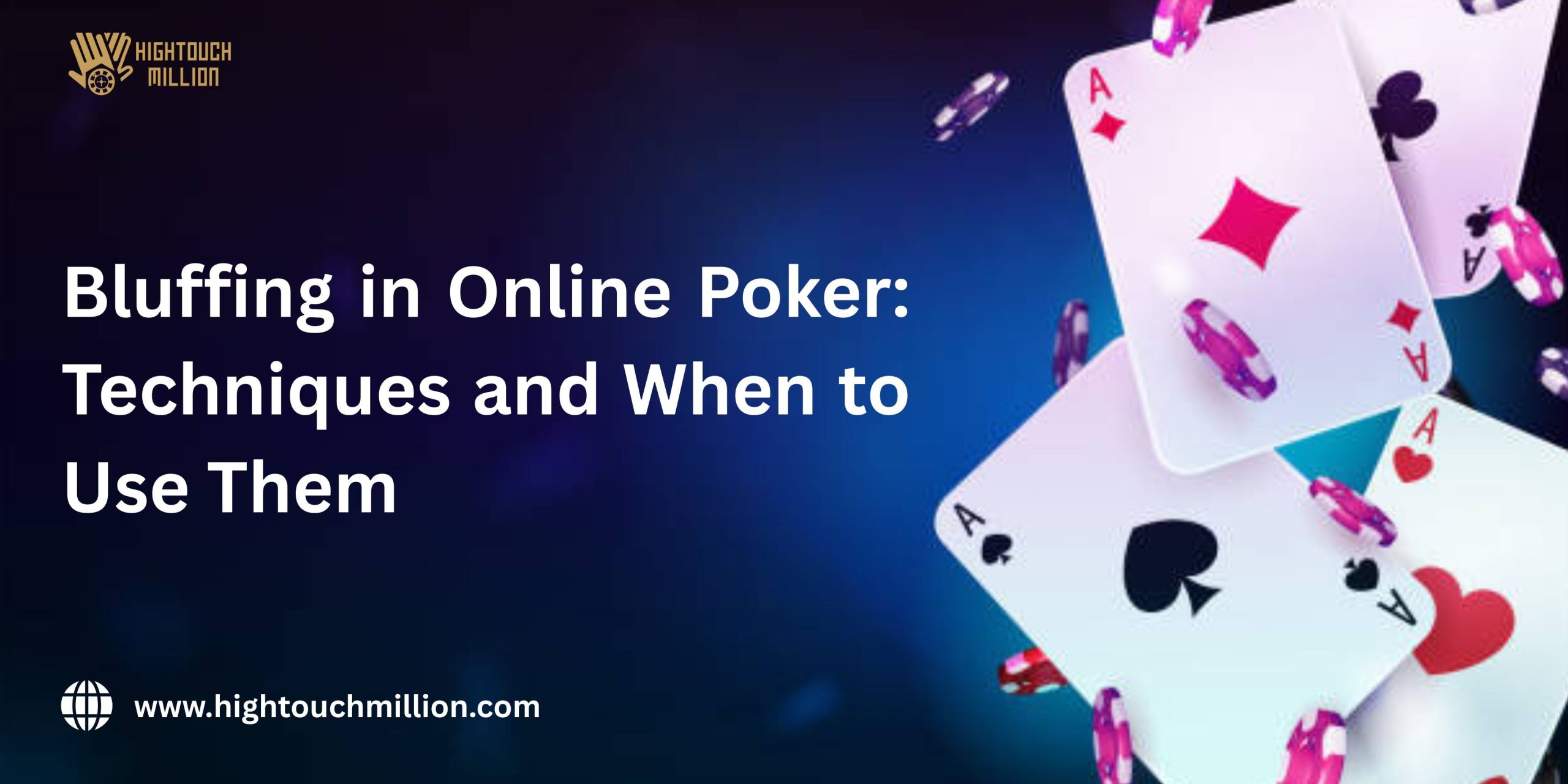
Bluffing in Online Poker: Techniques and When to Use Them
Playing sly in card games is important to hold an upper hand. Bluffing plays a significant role in poker games, especially when playing online. Since body language isn’t an option online, making sure people notice your large bets is crucial for your strategy.
If you bluff wisely, you can succeed in which pots you win, even without strong cards. But you shouldn’t always bluff; instead, use it wisely and only when necessary. We’ll examine the importance of bluffing in online poker and explore when it may be beneficial.
What Does Bluffing Refer To in Online Poker?
Bluffing in online poker means making a big wager to make the others think you have a better hand, when in reality, you are confident they don’t. You’re trying to convince them you’re much better than you are. Understanding your opponent’s thought process is the core of this trick.
In poker played over the internet, you don’t get to notice body signals, so you need to bluff by following established betting movements. That’s why it’s called a true skill. If your bets and raises look natural and fit the story of a strong hand, your bluff is much more likely to work.
Popular Types of Bluffing in Online Poker
1. Continuation Betting (C-Bet)
The continuation bet is the most common bluff move online. Imagine you raised before the flop, now you bet again on the flop even if the cards didn’t help your hand. This is a powerful move because it often makes your opponents fold hands that didn’t connect with the flop.
For example, you raise a pre-flop with Ace-King. The flop comes 7-2-9 rainbow, which doesn’t help you. Betting again shows confidence, which can prompt others to fold their weaker hands.
Still, watch out, because your opponent’s hand might improve when you double barrel, so you should be familiar with their style.
2. Semi-Bluffing
Semi-bluffing is different. This is when you bet with a hand that isn’t strong yet but has the potential to improve, like a flush or straight draw. Even if your opponent calls, you have chances to hit your draw and win a big pot.
For example, if you have four cards to a flush on the flop, betting here can push opponents off made hands. If they don’t fold, you still have outs to make a flush on the turn or river.
Semi-bluffing works well against players who fold easily to aggression but also call when they think they might have the best hand.
3. Double Barrel Bluffing
Double barreling means betting on both the flop and the turn to put pressure on your opponent. This is a step beyond a simple continuation bet, designed to make them fold before the river.
Say you raised the pre-flop, bet the flop, and your opponent called. If the turn card is favorable to your story (like another high card), betting again can push them off a medium-strength hand.
However, beware that the turn can sometimes improve your opponent’s hand, so it’s essential to know your opponent’s tendencies before double-barreling.
4. Check-Raise Bluff
Check-raising is a more advanced bluff. You check first, letting your opponent bet, then you raise them. This often suggests you have a very strong hand, forcing opponents to reconsider their holdings.
It’s a move best used sparingly, especially against aggressive players who tend to bet frequently. Pulling this off can make your opponents second-guess their hand and cause them to fold.
5. The Squeeze Play
This play comes into effect when there is a raise and one or more callers act before you. By 3-betting (re-raising), you apply a lot of pressure, often causing everyone to fold. It’s a great bluffing technique if the original raiser and callers are loose players.
For example, if someone opens with a weak hand and another player calls, a strong 3-bet from you can make both fold, winning the pot right there.
When Should You Bluff in Online Poker?
Bluffing isn’t something to do just because you want action. Knowing when to bluff is half the battle.
1. Consider Your Opponents
Some players are easy to bluff. Tight players who fold often to bets are perfect targets. Loose players who call everything? Not so much. Aggressive players might fight back and put your bluff to the test.
Reading your opponents over several hands and spotting their tendencies can guide your bluffing decisions.
2. Position is Key
Position in poker means the order in which players act. Bluffing is usually safer and more effective when you’re in a late position, because you get to see what others do first.
If you’re in an early position, bluffing can be risky since many players act after you and can call or raise.
3. Board Texture Matters
Boards that are “dry,” with disconnected cards and few draw possibilities, are better for bluffing. Opponents have less reason to continue.
On “wet” boards, with lots of straight and flush draws possible, bluffing is less likely to succeed because players have more hands worth calling with.
4. Timing and Frequency
Bluff sparingly to keep your opponents guessing. If you bluff too often, players will catch on and call you down more often. Mixing bluffs with value bets, bets made with strong hands, makes your game more unpredictable.
Common Bluffing Mistakes
Trying to bluff multiple players at once. The more opponents in a pot, the less likely a bluff will work.
- Ignoring what you know about your opponents’ play style.
- Bluffing too often and becoming predictable.
- Bluffing in an early position without enough information.
- Spotting When Others Are Bluffing
Protecting yourself from bluffs is just as important. Watch for players who suddenly bet aggressively, especially if they have not previously shown a strong history of doing so. Strange bet sizes or quick bets can also indicate bluffing.
If a player folds easily to pressure, they might have been bluffing themselves.
Wrapping Up
Bluffing is valuable in poker, but you need to think and look closely at what’s going on. Using a skilled bluff can help you take pots that you otherwise wouldn’t win.
Pay attention to your opponents, the board, and your position. Don’t bluff too often, and mix things up so no one can read you easily. With practice, bluffing will become a natural part of your online poker play.
For more tips and in-depth poker advice, check out HighTouchMillion.com.
Read More: Poker Slang 101: Essential Terms Every Player Should Know



